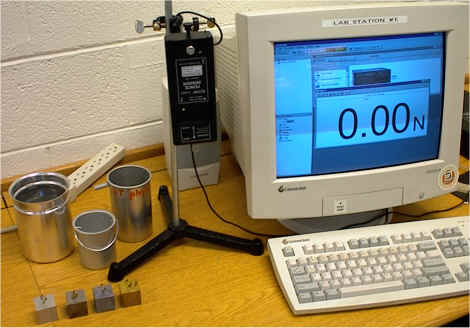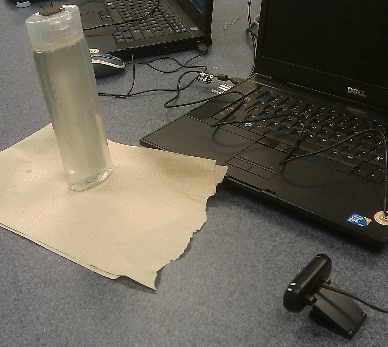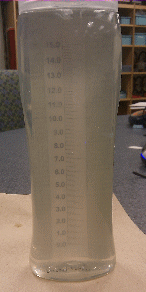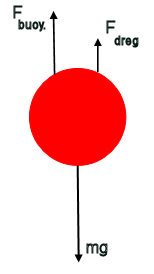















Laboratory exercises are not just about getting the right result, but about recognizing that fundamental physics principles shape our everyday experiences and underlie many of the devices that we use in our personal and professional lives. Please do not treat the laboratories as cookbook exercises. Permit yourself to think! Thoughtful answers to the questions in blue will give you most of the laboratory credit.
You can discuss the lab with your fellow students and the lab instructors in the Canvas discussion forum.
Open a Microsoft Word document to keep a log of your experimental procedures and your results. This log will form the basis of your lab report. Address the points highlighted in blue.
Grading scheme for all labs:
25% for completion
In order to receive full
credit, you have to complete the entire lab and answered all parts.
Use full sentences explaining your results, show work, insert and properly label tables
and plots, proofread, and use correct units. Make comments if you were
stuck or if your results seem to have errors. Mention what could have
caused these errors in your results and how they could be improved.
The reports are to help you, so use them as kind of like a journal to help
you think through the material.
25% for accuracy
You do have to put effort into
these labs. This is a 4 credit-hour course with lab, so just like for
in-person labs, you have to set aside time to work on the labs.
50% for a reflection at the end of your report, i.e. a
personal account of your experience with the lab. It should be written
in the first person. You can format it as a report to a friend or
acquaintance.
You should reflect on the material and mention how well you understood
it.
Did you understand what you were doing during an exercise or activity, or did
you just follow instructions?
Do your results make sense to you, or do you expect them to be wrong? Why?
Do you have suggestions on how to improve the exercise or activities so students
can learn more from them?
...
Some of the phrases you may want to use are:
The most important thing was...
learned that...
At the time I felt...
This was likely due to...
After thinking about it...
Later I realized...
This was because...
This was like...
wonder what would happen if...
I'm still unsure about...
...
In this laboratory you will determine the density of a metal block by applying Archimedes' principle. Then you will determine the viscosity of a brand of "Volumizing Shampoo" using Stokes' law. You will use a fluid column as a viscometer and measure the rate of descent of a steel sphere, as it falls under the influence of gravity through the fluid, after the sphere has reached terminal velocity.
Experiment 1:
Archimedes' Principle states that an object partially or wholly immersed in a gas or liquid is acted upon by an upward buoyant force B equal to the weight w of the gas or liquid it displaces. In this experiment you will verify this by measuring the apparent loss of weight of several submerged objects and by finding the weight of the displaced fluid. You will also determine the density of the objects. A PASCO Force Sensor is used to measure the weights.

I. Verify Archimedes' principle using the data below. Click on a small picture if you want to see an enlarged picture.
| (a) | (b) | (c) | (d) | |
|---|---|---|---|---|
| Object 1: |
 |
 |
 |
 |
| Object 2: |
 |
 |
 |
 |
| Object 3: |
 |
 |
 |
 |
| Object 4: |
 |
 |
 |
 |
For each of the objects:
(a) Determine the weight Wc of the empty container with the handle. When the container is suspended from the force sensor, the force sensor measures the force of gravity (weight) acting on the object, and the program displays the magnitude of this force (in N) on the computer screen.
(b) Determine the weight of an object Wo when it is suspended above the container with the overflow spout. This container is completely filled with water, and the container with the handle standing below the spout is empty.
(c) Determine the apparent weight of the object Wow after it has been lowered into the water. As the object is lowered into the water, water pours out of the overflow spout. The container with the handle has collected this water.
(d) Determine the weight Wcw of the container with the handle holding the collected water.
Record the weights in a spreadsheet as shown below.
| Wc | Wo | Wow | Wcw | Ww | Fb | (Fb-Ww)/Fb | |
|---|---|---|---|---|---|---|---|
| Object 1 | |||||||
| Object 2 | |||||||
| Object 3 | |||||||
| Object 4 |
For each of the objects:
II. Determine the density of the objects.
Extend your Excel spreadsheet. Set up labels as shown below.
| mo | mw | Vw | ρo | material | |
|---|---|---|---|---|---|
| Object 1 | |||||
| Object 2 | |||||
| Object 3 | |||||
| Object 4 |
| Material | Density (kg/m3) |
|---|---|
| Aluminum | 2.7*103 |
| Brass | 8.7*103 |
| Lead | 11.3*103 |
| Steel | 7.9*103 |
| Water | 1.0*103 |
Log entries:
Viscosity is a measure of a fluids resistance to relative motion within the fluid. Highly viscous fluids do not readily flow. The viscosity of a fluid usually varies with temperature. For a fluid flowing through a pipe in laminar flow, viscosity is one of the factors determining the volume flow rate.
Poiseuille's law: Q = π∆Pr4/(8ηL)
Volume flow rate = π*(pressure difference)*(pipe radius)4/[8*(pipe length)*viscosity)
Exercise
Blood is a viscous fluid circulating through the human body. The circulatory system is a closed-loop system with two pumps. One-way valves keep the flow unidirectional. A sketch is shown below. The unit of pressure in the sketch is mm Hg. (1 atm = 760 mm Hg)

During heavy exercise, the blood's volume flow rate is 5-10 times higher than when the body is at rest. Discuss different possible ways that a body can accomplish this?

It is often important to know the viscosity of a fluid. A viscosimeter is the instrument used to measure viscosity. The study of the viscosity of substances is known as rheology.
In order to keep the pistons moving smoothly in the cylinders of the internal combustion engine in a car, a thin film of motor oil between the piston rings and the cylinder wall acts as a lubricant. The oil must be able to keep the piston moving smoothly, when the engine first starts up and is still cold and when the engine reaches its high operating temperature. One way of measuring an oil's ability to lubricate is to measure its viscosity.
In this session you will determine the viscosity of different brands of "Volumizing Shampoo" using Stokes' law. You will use a fluid column as a viscometer and measure the rate of descent of a steel sphere, as it falls under the influence of gravity through the fluid, after the sphere has reached terminal velocity.
George Gabriel Stokes, an Irish-born mathematician, worked most of his professional life describing fluid properties. Stokes' law gives the force required to move a sphere through a viscous fluid at a specific velocity, as long as the flow around the sphere is laminar and the Reynolds number is low (Reynolds number < 1). Stokes' Law is written as
F = 6πηrv.
Here r is the radius of the sphere, v the speed and η the viscosity.
Experiment 2:
Measure the rate of descent of a steel sphere, as it falls under the influence of gravity through the shampoo.


Do the experiment! Find the speed (positive number) of the sphere.
Insert your data table and your plot of position versus time (with trendline) into your log.
The forces acting on the sphere are gravity, the buoyant force, and the viscous drag force given by Stokes' law. A free body diagram is shown below.

Since the sphere moves with constant velocity, the net force is zero.
The density of the "Volumizing Shampoo" is very close to that of water,
ρfluid = 1.03 g/cm3.
The density of the stainless steel ball is 7.866 g/cm3, and its
diameter is 1/4 inch = 0.635 cm.
| fluid | viscosity (Pa-s) |
|---|---|
| honey | 2 - 10 |
| molasses | 5 - 10 |
| ketchup | 50 - 100 |
| chocolate syrup | 10 - 25 |
Convert your log into a lab report. See the grading scheme for all lab reports.
Name:
E-mail address:
Laboratory 1 Report
Save your Word document (your name_lab1.docx), go to Canvas, Assignments, Lab 1, and submit your document.